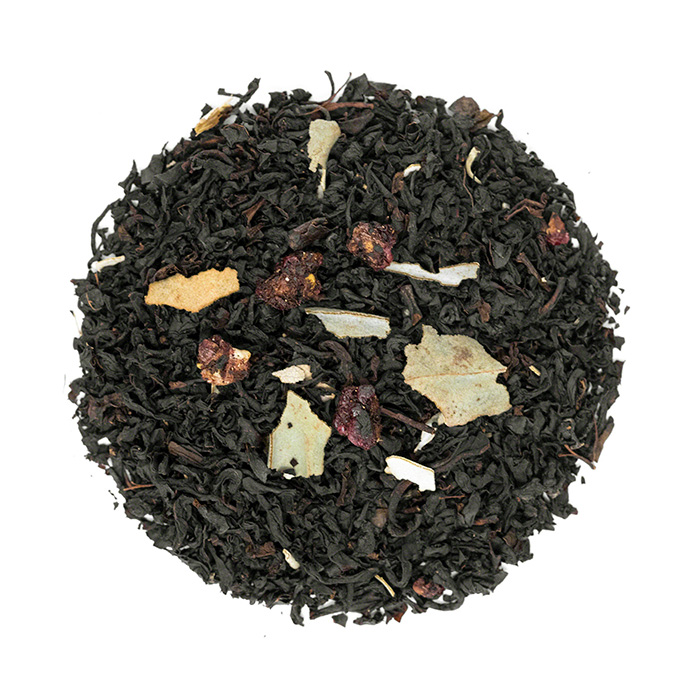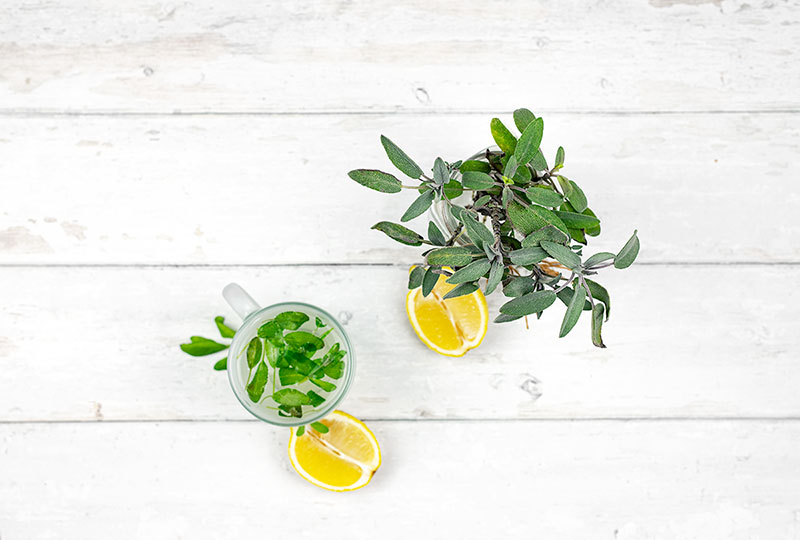Sage Tea Guide
Sage is one of the most versatile herbs in the world. Because of its remarkable health benefits and unique flavor, it’s been an important medicinal and culinary herb for centuries. Why is this herb so magnificent? Keep reading.
What is sage tea?
Sage tea is a herbal infusion made by steeping or boiling fresh or dried sage leaves in water. Sage or Salvia officinalis is a shrub from the mint family native to the Mediterranean region. There are different types of sage plants, but Salvia officinalis and Salvia verbenaca native both native to Europe and Salvia apiana, native to the American continent, are the most commonly used for making tea. Clary sage or Salvia sclarea is used for making essential oil, popular and important oil in aromatherapy.
Other names for Salvia officinalis are true sage, common sage, or culinary sage[1]. It has leaves covered with light greenish grey or white grey hairs. Leaves are used for making tea and for cooking. Sage has a specific aromatic, peppery scent and flavor and numerous potential health benefits. Traditionally it has been used for treating a wide range of health issues – from ulcers, rheumatism and tremor[2] to depression and bronchitis[3].
Dried sage is sometimes blended with other herbs or real tea. Tea blends containing sage will contain caffeine if they are blended with real tea made from Camellia sinensis plant. Pure herbal teas will rarely contain caffeine. Seeds, flowers and leaves are all edible, but for cooking and making tea, leaves are the most important part of the this plant.
Health Benefits of Drinking Sage tea
Sage has been one of the most valuable plants for making different home remedies for decades. Studies show that sage has “anticancer, anti-inflammatory, antinociceptive, antioxidant, antimicrobial, antimutagenic, anti-dementia, hypoglycemic, and hypolipidemic” properties[4]. It contains different flavonoids, including EGCG[5], the same catechin found abundantly in green tea. Sage is one of rare herbal home remedies that’s still often recommended by medical professionals for home treatments. Even though it may provide numerous benefits, never use it without consulting your doctor first.

Simpe Sage tea blend with black tea, white sage and blackberries
Studies suggest that sage may help to improve cognitive function, memory and attention, reduce blood cholesterol levels and blood sugar levels, and hep with throat pain[6]. Other studies say that drinking sage tea could provide anticancer activity and reduce oxidative stress[7]. Sage possesses antifungal, antiviral and anti-malarial effects and may help against different fungus, including many Candida species, and even bacteria resistant to antibiotics, such as Streptococcus pneumonia[8].
Furthermore, research showed that sage may be beneficial for reducing “hot flashes, night sweats, panic, fatigue and concentrations[9]” problems in postmenopausal women.
How to Make Sage Tea
Sage has a very intense and specific flavor that may not be everyone’s cup of tea. However, it blends well with other herbs and flowers, such as lavender, mint, thyme and rosemary, and with citrus flavors including lemongrass and lemon. To make sage tea you can use both dried and fresh sage leaves. Organic, homegrown sage is a wonderful choice for making tea.
Sage can become very bitter, so always pay attention to the steeping time and the amount of leaves you are using. Add a teaspoon of honey to pure sage tea to make it sweeter. Alternatively, experiment with herbs and flowers to find the flavor you will enjoy the most.
To make a cup of simple sage tea you will need fresh or dried sage tea leaves, spring water and a teapot or an infuser. Use about one teaspoon of dried and crushed tea leaves or about 5-10 fresh sage leaves, depending on their size and desired strength. Bring water to a boil and steep fresh sage leaves in boiling water for about 5 minutes. Strain and add honey and lemon juice.
If you are using fresh leaves, don’t forget to wash them first.
FAQs
Does sage tea make you sleepy?
There is not enough evidence that sage tea can make you sleepy. However, sage tea is caffeine free, so it should not interfere with your sleep either. Studies showed that sage may help with depression, anxiety and improving mood, which could all have a positive effect on sleep quality. Inhaling clary sage essential oil may help with relaxation too[10] and may help promote a better sleep[11]. Sometimes, sage burning is used for cleansing the space and improving mood and sleep quality. Although this practice is centuries long and used in many countries around the world, there is no scientific evidence that it has any impact on the quality of sleep.
Are there any side effects of sage tea?
Just like any herbal or real tea, drinking too much sage tea may cause some side effects too. Sage contains a compound called thujone that may cause “severe nervous system symptoms[12]” including hallucinations and convulsions. However, studies suggest that drinking 2 up to 20[13] cups of sage tea a day may not cause any side effects. Avoid drinking sage tea is you are pregnant or breastfeeding.
When to harvest sage?
Sage is available year round. You can either plant it in a pot and keep indoors or grow it as a shrub outdoors. Like many other plants, sage is best harvested before the flowers bloom. In winter, outdoors sage bushes may not be as rich and fresh as they are in warmer months. You can pick either separate leaves or whole springs. Place them on a dry newspaper and dry in the shade. Store in airtight containers. If you want to use fresh sage, use fresh leaves within a few days.
Disclaimer: This article is for informational purposes only. It’s not intended to replace medical advice, diagnosis or treatment. Every person is different and may react to different herbs and teas differently. Never use teas or herbs to treat serious medical conditions on your own. Always seek professional medical advice before choosing home remedies.
References:
[1] https://www.ncbi.nlm.nih.gov/pmc/articles/PMC4003706/
[2] https://www.ncbi.nlm.nih.gov/pmc/articles/PMC5634728/
[3] https://www.ncbi.nlm.nih.gov/pmc/articles/PMC4003706/
[4] https://www.ncbi.nlm.nih.gov/pmc/articles/PMC5634728/
[5] https://www.ncbi.nlm.nih.gov/pmc/articles/PMC5634728/
[6] https://www.ncbi.nlm.nih.gov/pmc/articles/PMC5634728/
[7] https://www.ncbi.nlm.nih.gov/pmc/articles/PMC5634728/
[8] https://www.ncbi.nlm.nih.gov/pmc/articles/PMC5634728/
[9] https://www.ncbi.nlm.nih.gov/pmc/articles/PMC6686654/
[10] https://www.ncbi.nlm.nih.gov/pmc/articles/PMC3700459/
[11] https://ijogi.mums.ac.ir/article_15997.html?lang=en



